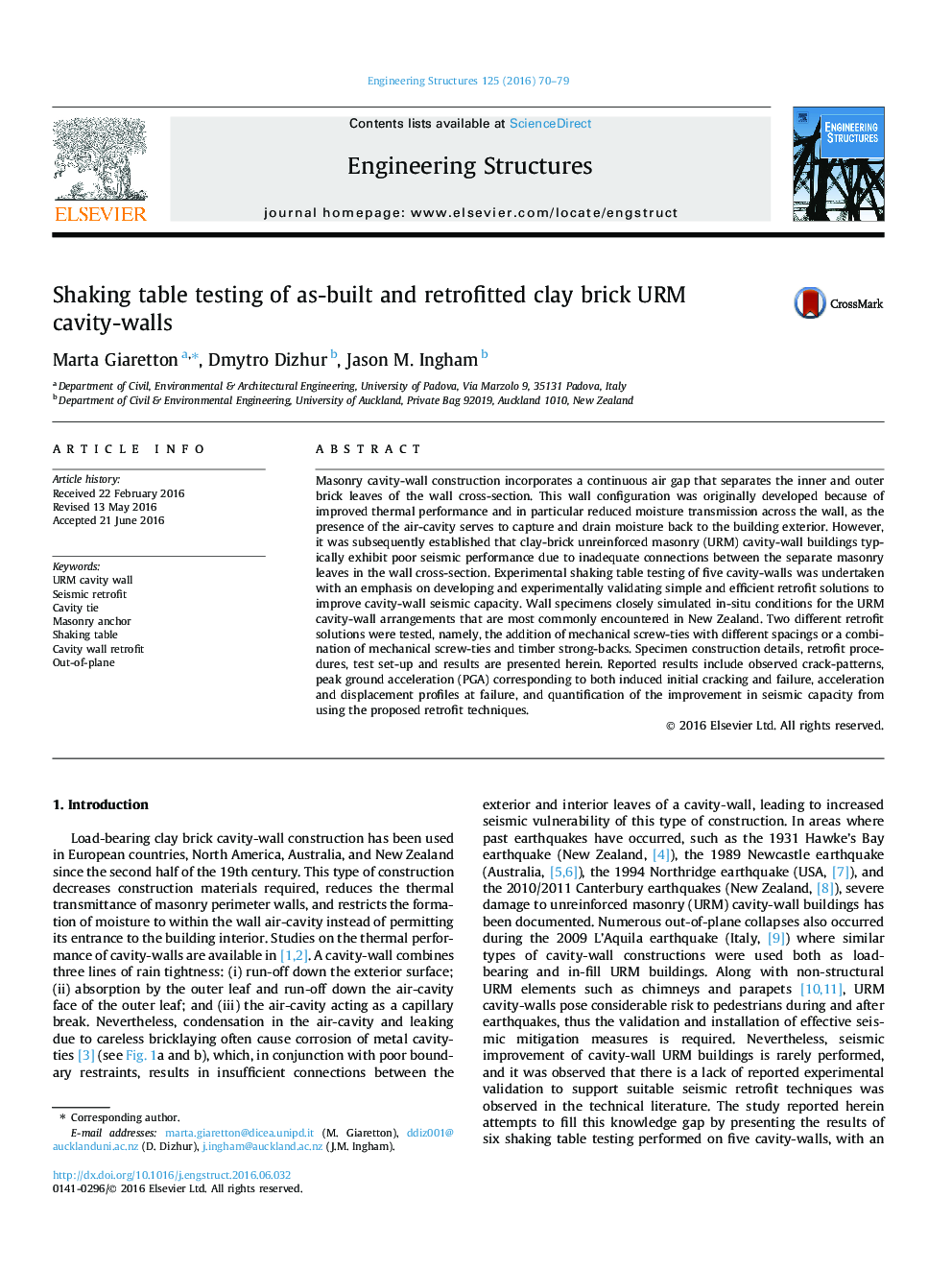| Article ID | Journal | Published Year | Pages | File Type |
|---|---|---|---|---|
| 6739464 | Engineering Structures | 2016 | 10 Pages |
Abstract
Masonry cavity-wall construction incorporates a continuous air gap that separates the inner and outer brick leaves of the wall cross-section. This wall configuration was originally developed because of improved thermal performance and in particular reduced moisture transmission across the wall, as the presence of the air-cavity serves to capture and drain moisture back to the building exterior. However, it was subsequently established that clay-brick unreinforced masonry (URM) cavity-wall buildings typically exhibit poor seismic performance due to inadequate connections between the separate masonry leaves in the wall cross-section. Experimental shaking table testing of five cavity-walls was undertaken with an emphasis on developing and experimentally validating simple and efficient retrofit solutions to improve cavity-wall seismic capacity. Wall specimens closely simulated in-situ conditions for the URM cavity-wall arrangements that are most commonly encountered in New Zealand. Two different retrofit solutions were tested, namely, the addition of mechanical screw-ties with different spacings or a combination of mechanical screw-ties and timber strong-backs. Specimen construction details, retrofit procedures, test set-up and results are presented herein. Reported results include observed crack-patterns, peak ground acceleration (PGA) corresponding to both induced initial cracking and failure, acceleration and displacement profiles at failure, and quantification of the improvement in seismic capacity from using the proposed retrofit techniques.
Related Topics
Physical Sciences and Engineering
Earth and Planetary Sciences
Geotechnical Engineering and Engineering Geology
Authors
Marta Giaretton, Dmytro Dizhur, Jason M. Ingham,
